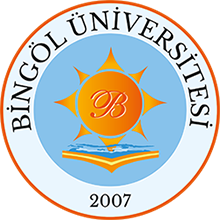Fatty acid and metal composition of the seeds of vicia ervilia varieties form Turkey
Göster/
Tarih
2014-03-01Yazar
Kaplan, Mahmut
Kökten, Kağan
Uzun, Satı
Üst veri
Tüm öğe kaydını gösterÖzet
Bitter vetch (Vicia ervilia L.) of the Fabaceae family is grown in Asiatic Turkey, central and northern Spain, and other
countries of the Mediterranean region and western United States; the seed is exported to the United Kingdom and other
countries for feed, especially for sheep. The antinutritional factors of the species of the genus Vicia, in addition to affecting the
nutritional value of the grain, can cause pathological changes of varying extent in animals that consume them, especially birds.
The seed is the part mainly used in this group of legumes, although they are also grown as green fodder or hay and play an
important role as a green manure, which is dug in at the end of the winter to improve soil fertility. The straw of these legumes
is of high nutritional value for livestock [1].
The objective of the present study was to determine the fatty acid (FA) and trace elements of the seeds of Vicia ervilia L.
varieties. In addition, during the course of this study, our aim was to characterize seed fatty acids used by animals in the field,
to establish the nutritional value, and to contribute to the renewable resources of FA and other chemical patterns in these crops.
The results of the fatty acid analysis are shown in Table 1, and of the trace elements, in Table 2. The fatty acid
composition of some bitter vetch varieties used as feed crops showed different saturated and unsaturated fatty acid concentrations.
The main components in the seed oils of the feed crops were linolenic, oleic, palmitic, myristic, stearic, and linoleic acids.
Linoleic acid, undoubtedly, is one of the most important polyunsaturated fatty acids in human food because of its ability to
prevent heart and vascular diseases [2]. The saturated acid components of the seed oils relieved that low-molecular weight
acids (caproic, caprylic, capric, and lauric acids) commonly found in all the investigated varieties. The total saturated fatty
acid (TSFA) concentrations of the feed crop oils studied were between 22.34 and 37.25%. On the other hand, the total unsaturated
FA contents (TUSFA) of the seed oils were higher than the TSFA, between 62.75 and 75.22%. Linoleic, oleic, and linolenic
acid components were reported as the main USFA components in Vicia [3], Colutea, Gonocytisus, Lupinus, Vicia, Hedysarum,
Onobrychis, Trigonella [4], and Astragalus [5, 6] genera patterns and also in some other family patterns like Euphorbiaceae
[7]. The high USFA contents in these seed crops have nutritional significance. As far as unsaturated fatty acid content is
concerned, the present study is supported by previous reports [4, 6, 8–11] that suggest that the unsaturated FA contents of
legume seed oils closely resemble each other and the abundant components are the linoleic–palmitic and/or oleic acids type
FA [12].
The concentrations of the elements in the seeds are presented in Table 2. All data are averages of three measurements
on each sample. The levels of metals were calculated on g·g–1 dry weight. Eight elements (Cu, Mn, Mo, Na, Zn, Fe, Mg, and B)
were detected in the crop seeds in different amounts. The contents of elements in the crop seeds were Cu 6.91–9.11,
Mn 10.55–12.94, Zn 107.3–154.9, Fe 57.84–81.79, Mg 1014–1119, B 2.70–6.24, Mo 0.35–1.44, and Na 10.14–
17.63 g·g–1 (Table 2). The role of trace elements in human nutrition and disease cannot be overemphasized. Even though
the mineral elements form a small proportion of the total composition of most plant materials and total body weight and do
not contribute to the energy value of the food, they are of great physiological importance particularly in body metabolism
[13]. It is of interest that the prevalent mineral element in the seeds is Mg, which is present in amounts of 1014–1119 g·g–1 dry
weight in all varieties (Table 2). The high quantity of potassium, magnesium, and calcium together with the quantity of
sodium plus the content of the essential elements iron, manganese, zinc, and copper make excellent sources of bioelements
[14]. It is recommended that these seeds be used in the preparation of diets of individuals with low levels of these mineral elements. Metals are unique nutrients because of their important role in metabolism. They are an essential part of many important
enzymes and also play roles of catalysts and antioxidants. Iron and copper, for example, are essential in blood formation, and
copper is also involved in normal carbohydrate and lipid metabolism [15].
As a result, the seeds of Vicia ervilia L. varieties are rich in unsaturated fatty acids and some elements. The results
were discussed in terms of nutrition, agricultural values, and phytochemicals. Legumes occupy an important place in human
and animal nutrition. Legumes are rich in proteins and complex carbohydrates and are an important source of minerals and
vitamins [16]. Grain legumes are potential sources of energy and micronutrients, but their use is still limited because of
uncertainty with respect to the amount and effect of antinutritional factors they may contain [17].
Bağlantı
http://hdl.handle.net/11472/299Koleksiyonlar

DSpace@BİNGÖL by Bingöl University Institutional Repository is licensed under a Creative Commons Attribution-NonCommercial-NoDerivs 4.0 Unported License..













